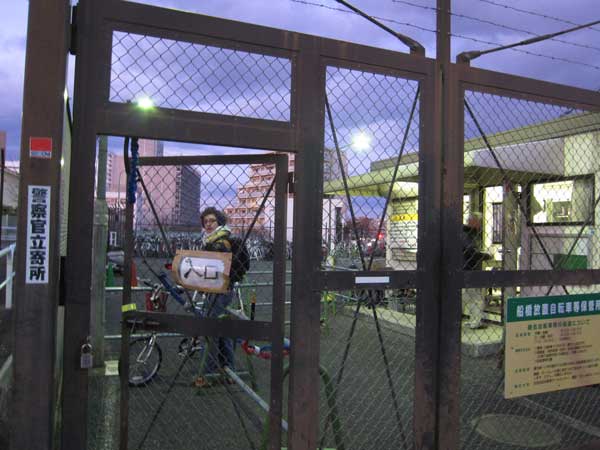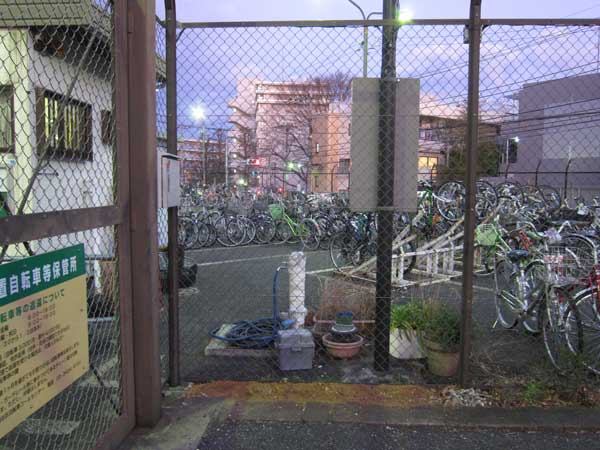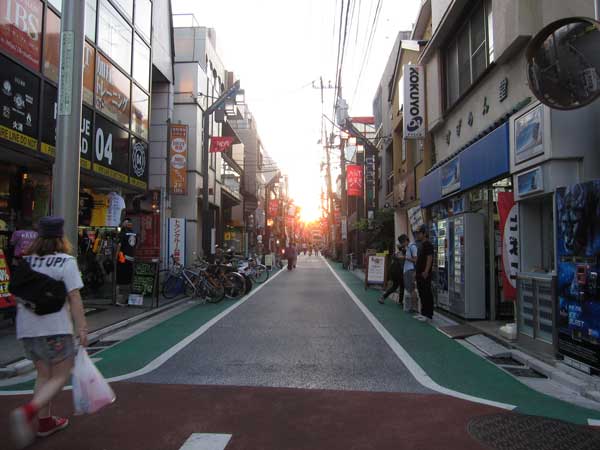
今年に、初めて自分の自転車を撤去されました。下北沢駅の近くに90分だけ置いたのですが、自転車の「刑務所」に行かなければなりませんでした。警官も電話情報も誤った情報をくれたので、困りました。Bear Pond の喫茶店の親切のオーナおかげで、助かりました。手続きはとても頭が痛い。なぜちょっとした過ちがきつい罰になってしまうのでしょう。
Have you ever had your bike confiscated in Tokyo? After living here for more than three years, it finally happened to me a few days into the new year.
Lulled by the tranquility of new year in Tokyo, when many people are still with family in the countryside, and fooled by the laniards clearly demarking bike parking, Edoble’s Jess and I left our bikes near the Shimokitazawa station while we had lunch.
Nintely minutes later, the bikes were 5 stations aways. We received poor information from the local police office. The four officers kept insisting we’d need our bike registration numbers, which of course we didn’t need nor have. The phone number I reached also seemed to say that was the case.
We were saved from further misery and punishment by the affable owner of Bear Pond coffee shop. He phoned the information number for us, and let us know what to expect in terms of bringing our ID and paying the fine.
It was easy to find the bikes, after walking fifteen minutes from the station. The bike prison guys were reasonably helpful but the map they hand out only shows Setagaya! Jess’ intuition and iPhone map provided us a short-cut back to Nakano.



